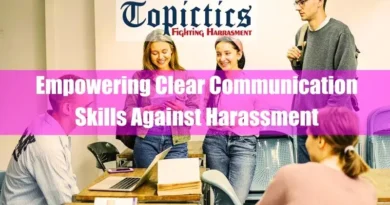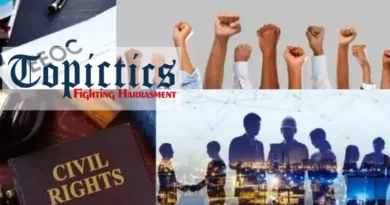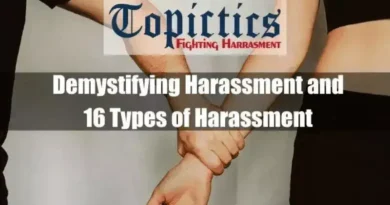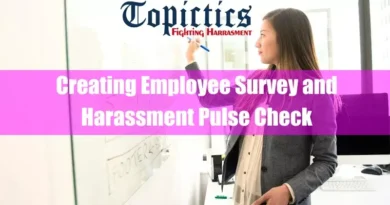Key Takeaways from “Understanding & Addressing Microinsults”:
| Section | Key Takeaways |
|---|---|
| Introduction | Microinsults are subtle, often unintentional discriminatory comments or actions that can significantly impact marginalized individuals over time. |
| What Are Microinsults? | Microinsults are a type of microaggression characterized by subtle, demeaning remarks or behaviors. Examples include assuming a minority individual got a job due to affirmative action. |
| The Impact of Microinsults | Microinsults lead to chronic stress, anxiety, depression, high blood pressure, gastrointestinal issues, and long-term effects on self-esteem and mental health. |
| Identifying Microinsults | Common scenarios include workplace evaluations and healthcare interactions. Unconscious biases play a significant role in perpetuating microinsults. |
| Microinsults in Different Contexts | They occur in workplaces, educational institutions, healthcare settings, and social interactions, affecting morale, academic performance, quality of care, and personal relationships. |
| Addressing Microinsults Personally | Recognize and acknowledge microinsults, respond calmly, and build emotional resilience through mindfulness and support networks. |
| Addressing Microinsults Organizationally | Develop inclusive policies, provide training and education, and encourage open dialogue to address microinsults within organizations. |
| Support for Targets of Microinsults | Offer emotional and psychological support, build support networks, and provide access to counseling services for those affected. |
| Preventing Microinsults | Promote awareness, implement bias training programs, and encourage allyship and advocacy to prevent microinsults. |
| Future Directions | Future research should focus on the long-term impacts of microinsults and develop new interventions. Technology can aid in identifying and addressing microinsults. |
I. Introduction
Microinsults are a pervasive and often overlooked form of discrimination. As subtle, often unintentional comments or actions, microinsults convey demeaning or hostile messages towards individuals based on their membership in a marginalized group.
Though seemingly minor, these actions accumulate over time, leading to significant psychological and physical health impacts. In this article, we will delve into the definition, characteristics, and examples of microinsults, explore their impacts, and provide strategies for identifying and addressing them effectively.
II. What Are Microinsults?
Definition and Characteristics
Microinsults are a subtype of microaggressions, which are everyday verbal, nonverbal, or environmental slights that communicate negative or derogatory messages to marginalized individuals.
Unlike overt acts of discrimination, microinsults are often subtle and may be delivered unconsciously. They can manifest as comments, behaviors, or even gestures that demean a person’s identity, such as race, gender, socioeconomic status, or sexual orientation.
Examples of Microinsults

Examples of microinsults include:
- A manager expressing surprise at a minority employee’s articulate speech.
- Assuming that a woman in a technical field is less knowledgeable than her male counterparts.
- Commenting that someone “speaks good English” despite being a native speaker implies that they are not expected to speak well because of their ethnic background.
- Suggesting that someone got their job due to affirmative action rather than merit.
These examples highlight the subtle nature of microinsults and how they can perpetuate stereotypes and biases.
Difference Between Microinsults and Other Microaggressions
Microinsults differ from other forms of microaggressions, such as microassaults and microinvalidations. Microassaults are explicit, deliberate acts of discrimination, like racial slurs or hate speech.
Microinvalidations, on the other hand, negate or dismiss the experiences of marginalized individuals, such as claiming “I don’t see color” or “Racism doesn’t exist anymore.” While microassaults are overt and intentional, microinsults and microinvalidations are often more subtle and can be unconscious.
III. The Impact of Microinsults
Psychological Effects
Microinsults can have profound psychological effects on those who experience them. Repeated exposure to these subtle slights can lead to chronic stress, as individuals must constantly navigate a world where their identity is undervalued.
This stress can manifest as anxiety, depression, and other mental health issues. Victims often feel a sense of helplessness and frustration, as microinsults are challenging to address directly due to their subtle nature.
Stress and Anxiety
The constant need to decode and respond to microinsults can lead to heightened stress and anxiety levels.
This chronic stress can exacerbate existing mental health conditions and contribute to the development of new ones. Individuals may become hyper-vigilant and always be on the lookout for potential slights, which can further increase their stress levels.
Depression
Long-term exposure to microinsults can lead to feelings of worthlessness and hopelessness, which are key symptoms of depression. The repeated undermining of one’s identity and capabilities can erode self-esteem, leading to a persistent sense of inadequacy.
Physical Health Consequences
The psychological stress caused by microinsults can also have significant physical health consequences. Chronic stress is known to contribute to a range of health issues, including high blood pressure and gastrointestinal problems.
High Blood Pressure
The body’s response to stress includes the release of hormones like cortisol, which can increase blood pressure. Over time, chronic stress from experiencing microinsults can lead to sustained high blood pressure, increasing the risk of heart disease and other cardiovascular issues.
Gastrointestinal Issues
Stress can also affect the digestive system, leading to issues like irritable bowel syndrome (IBS) and other gastrointestinal disorders. The constant anxiety and tension resulting from microinsults can disrupt normal digestive processes, causing discomfort and illness.
Long-term Effects on Self-esteem and Mental Health
The cumulative impact of microinsults can significantly harm an individual’s self-esteem and overall mental health. Persistent feelings of inadequacy and the need to constantly prove oneself can lead to long-term psychological damage.
Individuals may internalize the negative messages conveyed through microinsults, leading to diminished self-worth and identity.

IV. Identifying Microinsults
Common Situations and Scenarios
Microinsults can occur in various settings, including workplaces, educational institutions, healthcare environments, and social interactions.
Recognizing these subtle slights requires awareness and understanding of the contexts in which they typically arise. Common scenarios include:
- Workplace evaluations and feedback sessions where biases may influence the language used.
- Classroom discussions where certain students’ contributions are undervalued.
- Healthcare interactions where assumptions are made about a patient’s health literacy based on their background.
Unconscious Bias and Its Role in Microinsults
Unconscious bias plays a significant role in the occurrence of microinsults. These biases are deep-seated attitudes and stereotypes that influence our behavior without conscious awareness.
They can affect how we perceive and interact with others, leading to microinsults even with no malicious intent.
Addressing unconscious bias involves increasing awareness and understanding of these hidden prejudices. Training programs and self-reflection exercises can help individuals recognize and mitigate their biases, reducing the likelihood of committing microinsults.
Self-awareness and Reflection
Developing self-awareness is crucial in identifying and addressing microinsults. Individuals must reflect on their behaviors and attitudes to understand how they may inadvertently contribute to the problem. This self-reflection can involve:
- Examining one’s language and interactions for subtle biases.
- Seeking feedback from others about potential microinsults.
- Continually learning about different cultures and experiences to broaden one’s perspective.
V. Microinsults in Different Contexts
Workplace Environment
In the workplace, microinsults can undermine employee morale and productivity. They often manifest in performance reviews, team interactions, and informal conversations.
Employees may feel undervalued and demotivated, leading to higher turnover rates and lower job satisfaction. Addressing microinsults in the workplace requires creating an inclusive culture where diversity is genuinely respected and valued.
Educational Institutions
Microinsults in educational settings can affect students’ academic performance and mental well-being. Teachers and peers may unconsciously perpetuate stereotypes, influencing students’ perceptions and treatment.
This can lead to unequal opportunities and hinder the educational progress of marginalized students. Promoting awareness and inclusivity in schools is essential to combat these issues.
Healthcare Settings
In healthcare, microinsults can impact the quality of care provided to patients. Assumptions based on race, gender, or socioeconomic status can lead to misdiagnoses and inadequate treatment.
Patients who experience microinsults may avoid seeking care, resulting in poorer health outcomes. Healthcare providers must be trained to recognize and address their biases to provide equitable patient care.
Social Interactions
Microinsults also occur in everyday social interactions, affecting personal relationships and social dynamics. These subtle slights can strain friendships and family bonds, as individuals may feel hurt and misunderstood.
Promoting empathy and open communication is key to reducing microinsults in social settings.
VI. Addressing Microinsults Personally

Recognizing and Acknowledging Microinsults
The first step in addressing microinsults is recognizing and acknowledging their occurrence. This involves being mindful of one’s language and behavior and being open to feedback from others. When a microinsult is identified, it is important to acknowledge its impact on the affected individual.
Strategies for Responding in the Moment
Responding to microinsults can be challenging, but it is necessary to address the issue effectively. Some strategies include:
- Calmly and respectfully pointing out the microinsult and explaining why it is hurtful.
- Asking clarifying questions prompts the person to reflect on their comment or behavior.
- Using “I” statements to express how the microinsult affected you personally.
Building Emotional Resilience
Building emotional resilience is crucial for coping with the impact of microinsults. This involves developing strategies to manage stress and maintain mental well-being. Some approaches include:
- Practicing mindfulness and relaxation techniques to reduce stress.
- Seeking support from friends, family, or professional counselors.
- Engaging in activities that promote self-care and self-compassion.
By understanding, identifying, and addressing microinsults, individuals, and organizations can create more inclusive and supportive environments.
This benefits those directly affected by microinsults and fosters a culture of respect and empathy that enhances the well-being of all community members.
VII. Addressing Microinsults Organizationally

Creating Inclusive Policies and Practices
Organizations play a crucial role in mitigating microinsults by fostering an inclusive culture. This begins with developing comprehensive policies that prohibit discriminatory behaviors, including microinsults. These policies should be clear, accessible, and enforced consistently across all levels of the organization.
Inclusive practices can include:
- Establishing diversity and inclusion committees to oversee and promote inclusive initiatives.
- Implementing fair hiring practices that focus on diversity and equity.
- Creating safe spaces for employees to voice concerns without fear of retaliation.
Training and Education Programs
Training and education are essential tools for addressing microinsults within organizations. Effective programs should focus on:
- Raising awareness about microinsults and their impact on individuals and the organization.
- Educating employees about unconscious biases and how they influence behavior.
- Providing practical strategies for recognizing and addressing microinsults.
These programs can include workshops, seminars, and online courses. Engaging employees through interactive activities and real-life scenarios can enhance understanding and retention of the material.
Encouraging Open Dialogue and Feedback
Open dialogue is vital for addressing microinsults and fostering an inclusive workplace. Encouraging employees to share their experiences and concerns can help identify issues and promote understanding. Organizations can facilitate this by:
- Holding regular town hall meetings or discussion forums.
- Implementing anonymous feedback mechanisms, such as suggestion boxes or online surveys.
- Creating peer support groups where employees can discuss issues in a safe environment.
Leaders should model inclusive behavior and actively participate in these dialogues to demonstrate their commitment to addressing microinsults.
VIII. Support for Targets of Microinsults
Providing Emotional and Psychological Support
Organizations must provide robust support systems for individuals affected by microinsults. This can include:
- Offering access to mental health resources, such as counseling services and employee assistance programs.
- Providing training for managers and HR professionals on how to support employees who report microinsults.
- Creating a culture of empathy and understanding where employees feel comfortable seeking help.
Building Support Networks
Support networks can provide valuable assistance to individuals dealing with microinsults. Organizations can facilitate the development of these networks by:
- Establishing mentorship programs that connect employees with experienced mentors.
- Promoting employee resource groups (ERGs) focused on various aspects of diversity and inclusion.
- Encouraging peer support initiatives where employees can share their experiences and advice.
Resources and Counseling Services
Access to professional counseling services is crucial for individuals coping with the impact of microinsults. Organizations should ensure that:
- Employees can access confidential counseling services, either in-house or through external providers.
- Information about available resources is widely disseminated and easily accessible.
- Counseling services are equipped to address the specific needs of marginalized groups affected by microinsults.
IX. Preventing Microinsults
Promoting Awareness and Sensitivity
Preventing microinsults begins with raising awareness and promoting sensitivity toward diverse perspectives. This can be achieved by:
- Conducting regular awareness campaigns that highlight the importance of diversity and inclusion.
- Sharing educational materials, such as articles, videos, and podcasts, that discuss microinsults and their impact.
- Celebrating cultural diversity through events and initiatives that promote understanding and appreciation of different cultures.
Implementing Bias Training Programs
Bias training programs are essential for helping employees recognize and mitigate their unconscious biases. Effective programs should:
- Provide comprehensive training on the nature of unconscious biases and how they affect behavior.
- Offer practical strategies for reducing biases in decision-making processes.
- Include follow-up sessions to reinforce learning and track progress.
Encouraging Allyship and Advocacy
Allyship and advocacy are powerful tools for preventing microinsults. Encouraging employees to become allies involves:
- Providing training on how to support colleagues who experience microinsults.
- Encouraging employees to speak up against discriminatory behaviors and support affected individuals.
- Recognizing and rewarding acts of allyship and advocacy within the organization.
X. Future Directions in Addressing Microinsults
Research and Development in Microaggressions
Ongoing research is vital for understanding the evolving nature of microaggressions, including microinsults. Future studies should focus on:
- Exploring the long-term psychological and physical impacts of microinsults.
- Developing more effective interventions and support systems for individuals affected by microinsults.
- Investigating the role of technology in both perpetuating and addressing microinsults.
Emerging Trends and Strategies
Emerging trends in addressing microinsults include:
- Utilizing artificial intelligence and machine learning to identify patterns of microinsults in communication and behavior.
- Developing virtual reality (VR) training programs that simulate real-life scenarios to enhance empathy and understanding.
- Integrating diversity and inclusion metrics into organizational performance evaluations.
The Role of Technology in Combatting Microinsults
Technology can play a significant role in combatting microinsults by:
- Providing platforms for anonymous reporting and feedback.
- Offering online resources and training modules that are accessible to all employees.
- Leveraging data analytics to track and address patterns of discriminatory behavior.
XII. Conclusion
Addressing microinsults requires a multifaceted approach that includes awareness, education, support, and continuous improvement. Organizations must create inclusive policies, provide robust support systems, and promote open dialogue to effectively combat microinsults.
By fostering a culture of empathy and understanding, we can mitigate the impact of microinsults and create a more inclusive and equitable society.









